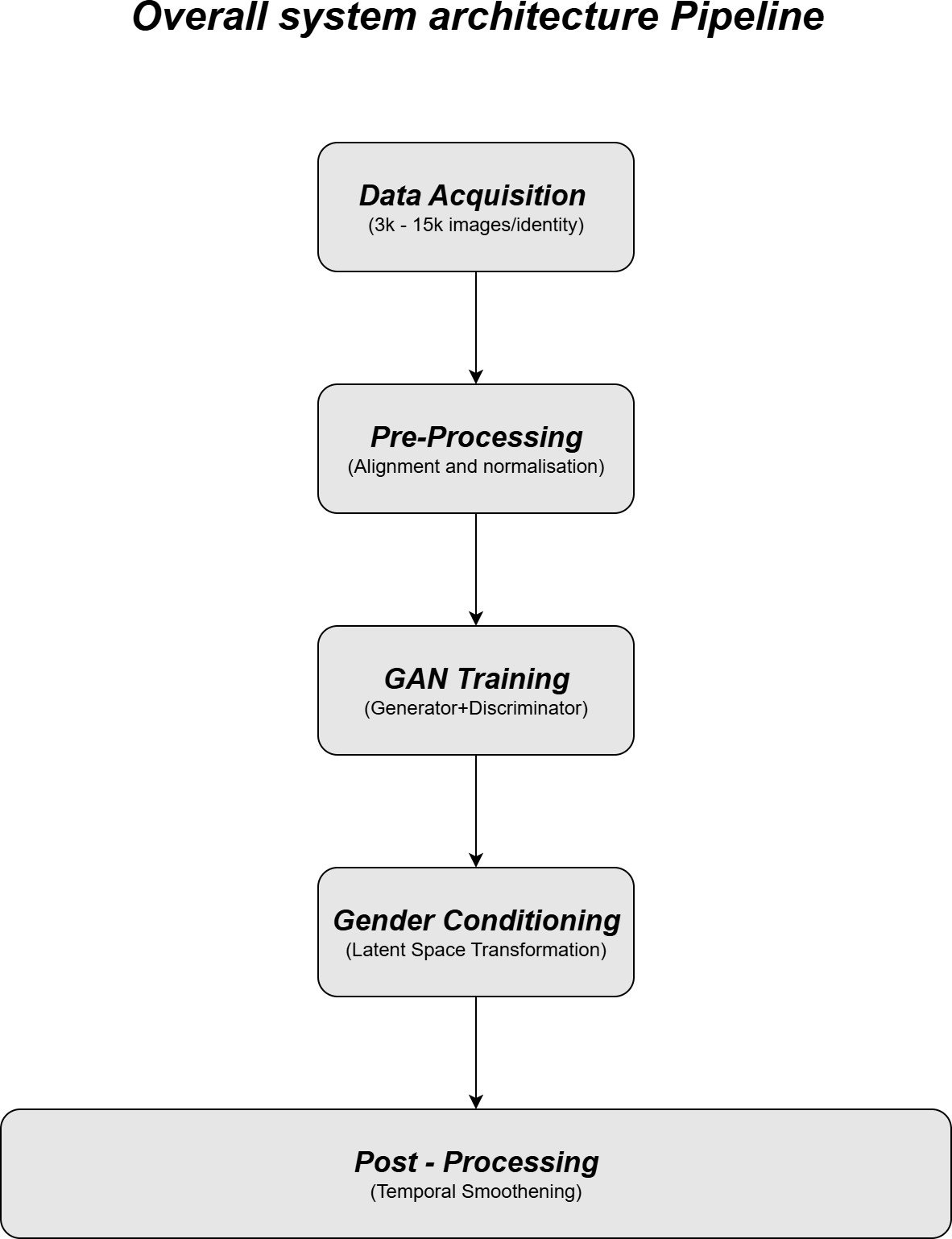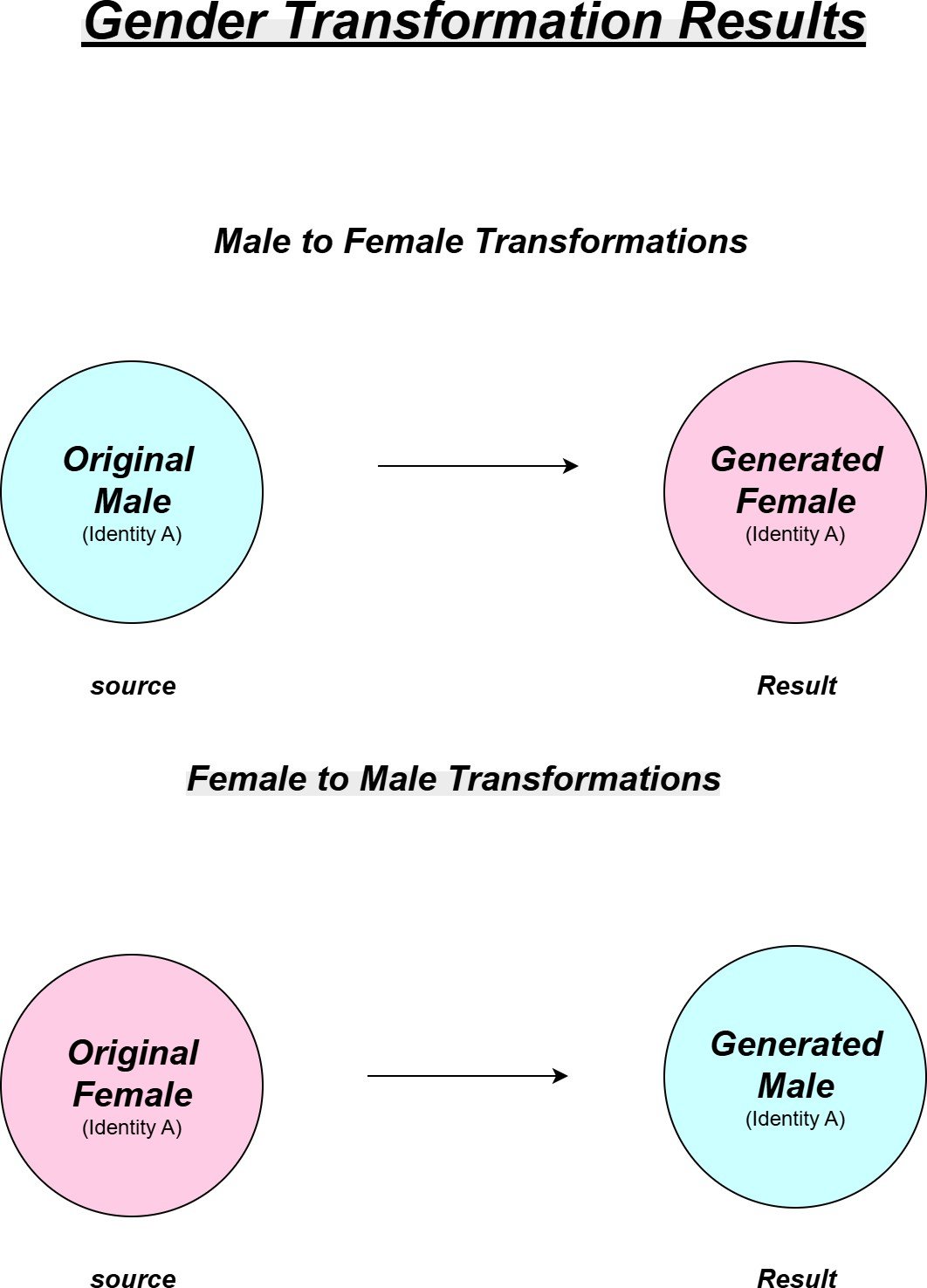By: C S Nakul Kalyan; CCRI, Asia University, Taiwan
Abstract
The Improvements in Artificial Intelligence (AI) and Computer graphics have been able to change the visual media without any visible effects. These advanced technologies have made it harder for regular people to differentiate between real and fake images and videos. Among these, the well-known technology used here is deepfakes, where the synthetic data is generated through deep learning techniques, often using Generative Adversarial Networks (GANs). While deep- fakes have been used for entertainment and creative purposes, ethical concern is raised, especially when there is a non-consensual manipulation of identity and abuse based on gender. In gender-swapped deepfakes, the individual’s identity has been altered to represent a different gender identity, highlighting the com- plex relationship between technical innovation and performance. In this study, we will go through the aesthetic and cultural aspects of gender-swapped deep- fakes, along with how they support and the damage they cause to dominant standards for gender representation.
Keywords
Gender Representation, Identity Transformation, Generative Adversarial Net- works (GANs), Deepfakes, Artificial Intelligence.
Introduction
Verifying the authenticity of visual media is not new, as even in the 19th century, rumors of photographic manipulation influenced public opinion. The emergence of digital photography and software like Adobe Photoshop has further trans- formed the public’s relationship with images and videos. Today, the advancement of Artificial Intelligence and computer graphics has introduced a new era of manipulating photos and videos, creating deepfakes, and generating synthetic videos using deep learning techniques. Originating from the online communities, deepfakes became well-known for their ability to insert celebrity faces into pornography footage without any consent provided [1]. This technology can create hyper-realistic alterations of the images and videos in which raises a serious concern about the misuse of the data [4]. In this Article, we will discuss the gender-swapped deepfakes in order to investigate the intersections of identity alteration, performance in digital media.
Proposed Methodology
The proposed Methodology joins the processing techniques, where the model is trained using advanced GAN structures [5], and production of a high-quality facial dataset to ensure visual consistency, where the following processes, as shown in Figure 1, are used to achieve this.

Data Acquisition
For both Source and target identities, the high-quality facial image datasets were gathered, which ensures the dataset contains many variations in facial expressions, angles, and lighting [3]. The dataset includes a balanced representation of male and female facial data to improve the GAN’s training performance. There are at least 3000 – 15000 facial images per identity that are created using the common preprocessing techniques such as facial alignment, background removal, landmark detection, etc as mentioned in Table 1. [5].
Table 1: Dataset Specification
COMPONENT | SPECIFICATION | VALUE/DESCRIPTION |
Male Identity images | count | 3,000 – 15,000 |
Female Identity Images | count | 3,000 – 15,000 |
Image Resolution | Range | 256 to 1024 pix |
Expression Variations | Types | Neutral, Happy. Sad, Angry, etc. |
Lightning Conditions | variations | Natural, Studio, Low-light, Outdoor |
Model Selection and Architecture
A Generative Adversarial Network (GAN) is implemented, using DeepFaceLab as the primary tool due to its excellent face-swapping performance in experimental environments [3]. The model architecture consists of:
Generator
The Generator is used to produce the gender-swapped facial outputs with the knowledge of identity-invariant features and altering the gender specific at- tributes [2].
Discriminator
The Discriminator is used to find the differences between the real and generated faces, which ensures a realistic skin texture, lightning consistency, and facial symmetry [3].
Training Process
The training of the model is usually done using NVIDIA GPUs, which contain a minimum of 11GB VRAM, used to handle the task of high-resolution face- swapping tasks more efficiently [5]. The cloud GPU Services (such as AWS) are utilized when the local hardware is insufficient. The progressive learning and adaptive discriminators were used in the model’s training to mainly decrease the artifacts and stabilize convergence [3].
Gender-Swap conditioning
A gender-swap conditioning is a module that is introduced by including a latent vector transformation mechanism into the GAN’s latent space, as shown in Figure 2.

This method provided precise control of gender characteristics, which main- tains different identification qualities, making the smooth transformation from male to female features (Vice Versa) [2].
Post-Processing
Here the Frames which was generated were blended into destination videos using features like color correction, edge feathering, and temporal smoothing to eliminate the flickering between frames [3]. The final outputs were evaluated for quality based on resolution, identity preservation, and facial realism to give a good quality output [5].
Ethical Considerations
This Proposed methodology places a strong emphasis on using AI responsibly and ensures that it does not involve non-consensual or harmful applications [1][4]. It also states that all the experiments were conducted on publicly available datasets, and all participants consented identities [4].
Conclusion
This study shows how Generative Adversarial Networks (GANs) can be used to produce the visually accurate gender-swapped deepfakes while not losing the subject’s core identity features and its important characteristics. This method produces realistic transformations that preserve the temporal and spatial consistency by adding post-processing with a good-quality gender conditioning dataset. The work states that the technology has a creative research potential and its misuse, particularly in non-consensual contexts which poses ethical risks. Finally, the creation and implementation of gender-swapped deepfake systems should be guided by ethical frameworks and technical safeguards to ensure that the identity transformation that is done will be consistent with responsibility, transparency, and harm reduction.
References
- Catherine Han, Anne Li, Deepak Kumar, and Zakir Durumeric. Char- acterizing the mrdeepfakes sexual deepfake marketplace. arXiv preprint arXiv:2410.11100, 2024.
- Christopher Holliday. Rewriting the stars: Surface tensions and gender troubles in the online media production of digital deepfakes. Convergence, 27(4):899–918, 2021.
- Jiaxin Liu, Jia Wang, Saihui Hou, Min Ren, Huijia Wu, Long Ma, Ren- wang Pei, and Zhaofeng He. Beyond face swapping: A diffusion-based dig- ital human benchmark for multimodal deepfake detection. arXiv preprint arXiv:2505.16512, 2025.
- Travis L Wagner and Ashley Blewer. “the word real is no longer real”: Deepfakes, gender, and the challenges of ai-altered video. Open Information Science, 3(1):32–46, 2019.
- Saima Waseem, Syed Abdul Rahman Syed Abu Bakar, Bilal Ashfaq Ahmed, Zaid Omar, Taiseer Abdalla Elfadil Eisa, and Mhassen Elnour Elneel Dalam. Deepfake on face and expression swap: A review. IEEE Access, 11:117865– 117906, 2023.
- Agrawal, D. P., Gupta, B. B., Yamaguchi, S., & Psannis, K. E. (2018). Recent Advances in Mobile Cloud Computing. Wireless Communications and Mobile Computing, 2018.
- Goyal, S., Kumar, S., Singh, S. K., Sarin, S., Priyanshu, Gupta, B. B., … & Colace, F. (2024). Synergistic application of neuro-fuzzy mechanisms in advanced neural networks for real-time stream data flux mitigation. Soft Computing, 28(20), 12425-12437.
- Panigrahi, R., Bele, N., Panigrahi, P. K., & Gupta, B. B. (2024). Features level sentiment mining in enterprise systems from informal text corpus using machine learning techniques. Enterprise Information Systems, 18(5), 2328186.
- Ching, D., Twomey, J., Aylett, M. P., Quayle, M., Linehan, C., & Murphy, G. (2025). Can deepfakes manipulate us? Assessing the evidence via a critical scoping review. PLoS One, 20(5), e0320124.
- Mmaduekwe, E. (2025). AI-driven Detection and Prevention of Deepfakes in National Security. Asian Journal of Research in Computer Science, 18(6), 361-368.
- Lundberg, E., & Mozelius, P. (2025). The potential effects of deepfakes on news media and entertainment. AI & SOCIETY, 40(4), 2159-2170.
Cite As
Kalyan C S N (2025) Gender-Swapped Deepfakes: Identity Transformation Through GANs, Insights2Techinfo, pp.1